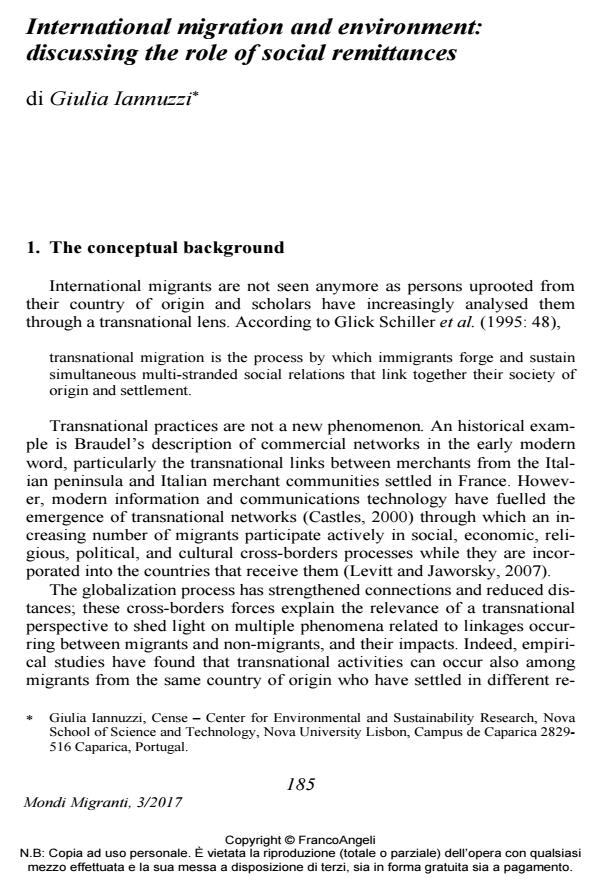International migration and environment: discussing the role of social remittances
Journal title MONDI MIGRANTI
Author/s Giulia Iannuzzi
Publishing Year 2018 Issue 2017/3
Language English Pages 15 P. 185-199 File size 184 KB
DOI 10.3280/MM2017-003009
DOI is like a bar code for intellectual property: to have more infomation
click here
Below, you can see the article first page
If you want to buy this article in PDF format, you can do it, following the instructions to buy download credits

FrancoAngeli is member of Publishers International Linking Association, Inc (PILA), a not-for-profit association which run the CrossRef service enabling links to and from online scholarly content.
People forced to migrate due to environmental changes are an increasing concern, especially considering climate change threats and related adaptation strategies. Concurrently, migrations can have impacts on the natural environment of sending and receiving countries, at different scales. The article aims to discuss the role of social remittances in deepening our understanding about the relationship between environment and international migrations. In the first part we introduce the concepts of transnational migration and remittances in order to build a conceptual background. In the second section we focus on environmentally-related international migrations with the purpose of highlighting the role of social remittances in shaping the decision to migrate, in a context in which environmental factors should be considered as one of the multiple and intertwined causes. The third section analyses international migration impacts upon environment. Here, the "channel" of social remittances is discussed in relation to human influence on the envi-ronment of sending and receiving communities and countries.
Keywords: Migrations, social remittances, environment, climate change
- From individual to collective social remittances: the role of translocal moorings in climate adaptation in Morocco Rachael Diniega, Simon A. Bunchuay-Peth, Patrick Sakdapolrak, in Mobilities /2025 pp.1288
DOI: 10.1080/17450101.2025.2506063
Giulia Iannuzzi, International migration and environment: discussing the role of social remittances in "MONDI MIGRANTI" 3/2017, pp 185-199, DOI: 10.3280/MM2017-003009